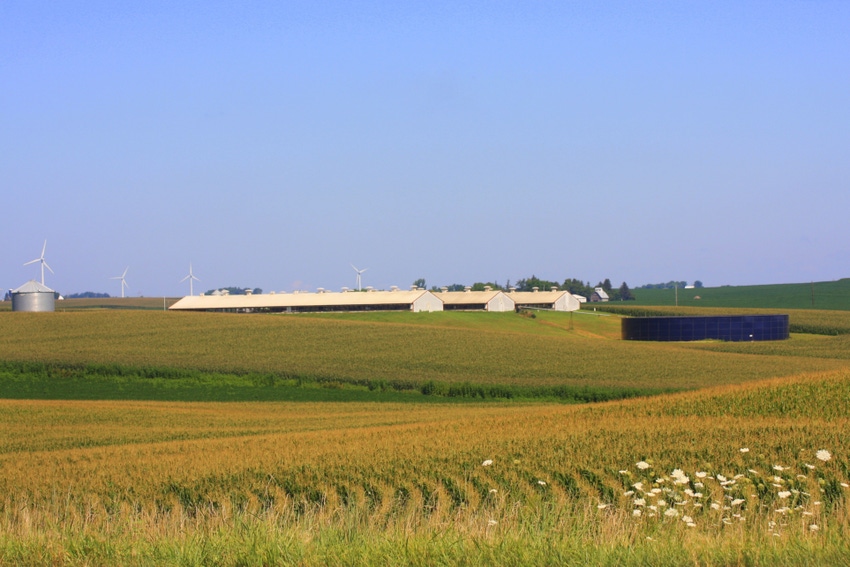Survey results mixed on whether producers think U.S. will withdraw from NAFTA.

Producer sentiment reached its second-highest level in more than two years in February, according to the latest Purdue/CME Group Ag Economy Barometer. However, the monthly survey of 400 U.S. agricultural producers showed ongoing uncertainty surrounding possible U.S. withdrawal from the North American Free Trade Agreement (NAFTA).
At 140 points, sentiment was higher for the second consecutive month, providing a strong, 14-point boost to the index compared to December 2017.
While the Ag Economy Barometer reached a survey high of more than 150 points back in January 2017, authors James Mintert, David Widmar and Michael Langemeier said it is worth noting the difference between the January 2017 peak in sentiment and the February 2018 reading.
“In early 2017, favorable sentiment regarding the agricultural economy was most heavily influenced by a strong uptick in in the forward-looking measure of producer sentiment -- the Index of Future Expectations -- along with a more modest improvement in current conditions,” they explained. “More recently, however, the barometer has been strongly supported by a long-term improvement in producer sentiment regarding current conditions on their farms, along with an uptick in expectations for the future.”
What this shows, according to the authors, is that the primary driver behind the barometer’s rise a year ago was better expectations for the future, whereas the primary driver this year appears to be an ongoing improvement in current conditions.
Uncertainty about NAFTA
On the February survey, producers were asked about their future expectations for U.S. agricultural exports. Results showed that producers remain optimistic that U.S. agricultural exports will remain strong over the next five years, with 87% of respondents expecting exports to either remain about the same or increase. Just 13% of farmers in the survey expressed concern that U.S. agricultural exports will decline over the next five years, which was virtually unchanged from a year ago, when the same question was posed. The upshot is that U.S. producers’ long-run expectations regarding agricultural exports have not changed over the course of the last year.
A new question regarding the likelihood of the U.S. withdrawing from NAFTA was posed in the February 2018 survey. Producers were asked to rank, on a scale from one to nine, the likelihood of the U.S. withdrawing from NAFTA. A large portion of respondents -- 39% -- provided a neutral rating of five, while 34% indicated that they think a withdrawal is more likely (a rating of six or higher) and 29% think a withdrawal would be unlikely (a rating of four or lower).
"Taken as a whole, the February survey indicates that producers are really uncertain about the future of NAFTA, but despite the uncertainty surrounding NAFTA, producers remain optimistic about the future of U.S. agricultural exports," said Mintert, the barometer's principal investigator and director of Purdue University's Center for Commercial Agriculture.
Soybeans more profitable
Many corn and soybean producers were in the midst of finalizing 2018 cropping plans when the February survey was conducted, according to the authors. With that in mind, producers were asked about their expectations for corn and soybean production in 2018.
When asked if they thought corn or soybeans would be more profitable in 2018, a majority (71%) said soybeans -- representing a modest shift from the February 2017 survey, when 67% expected soybeans to be more profitable than corn.
To learn more about 2018 cropping plans, producers were asked if they will plant more, fewer or about the same number of soybeans acres in 2018 compared to 2017. The vast majority of respondents -- 81% -- plan to leave their soybean acreage unchanged from a year ago. A nearly equal share of producers said they will plant more soybeans or fewer soybean acres, at 10% versus 9%, respectively. This was a shift from responses received for the February 2017 survey.
“A year ago, looking ahead to the 2017 planting season, 18% of producers reported they planned to increase soybean acreage, whereas 8% of respondents planned to reduce their soybean acreage. In other words, compared to last year’s survey responses, a slightly larger share of producers expect soybeans to be more profitable than corn, but fewer producers report plans to increase their soybean acres,” the authors noted.
About the Author(s)
You May Also Like

.png?width=300&auto=webp&quality=80&disable=upscale)

